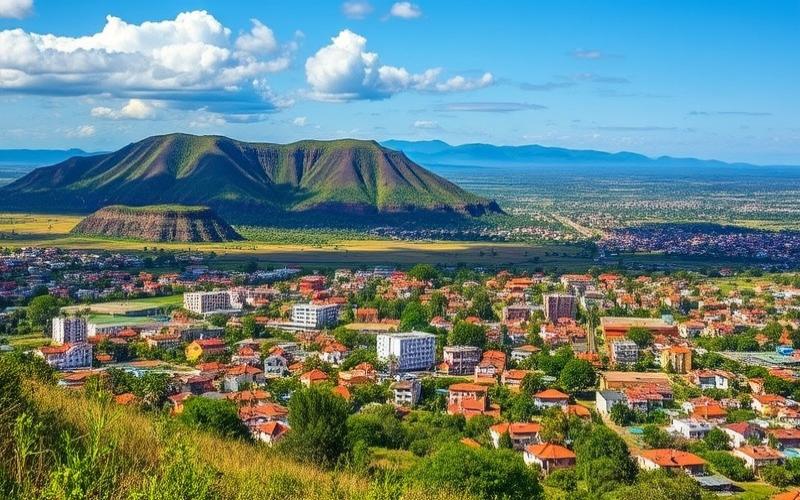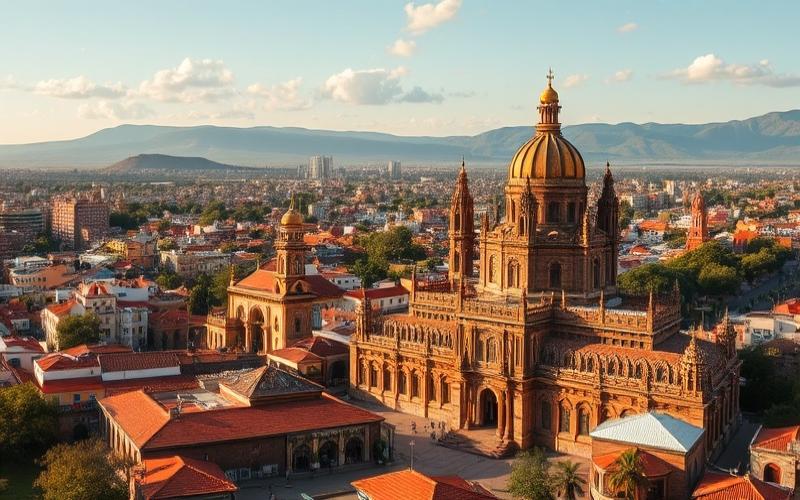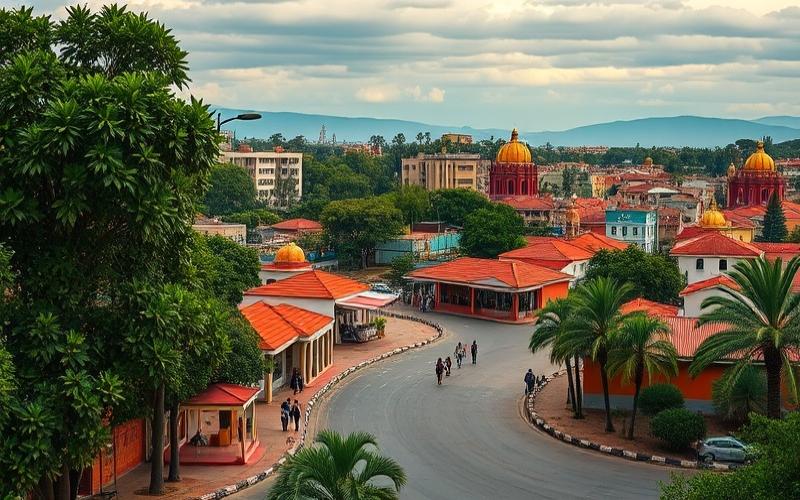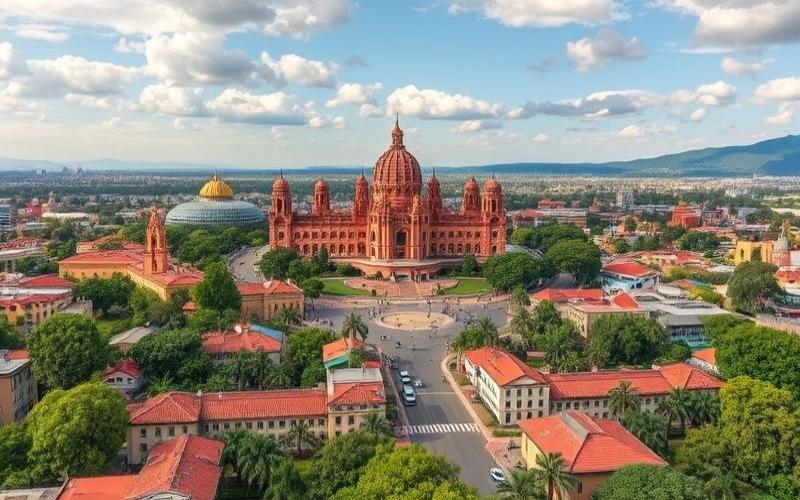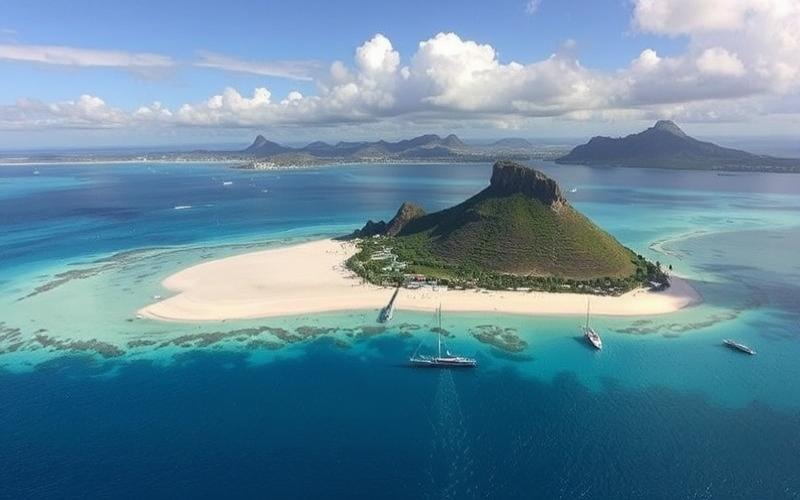
 Published on and written by Cyril Jarnias
Published on and written by Cyril Jarnias
Investing in parking facilities in Madagascar may seem unexpected, but this market is emerging as an attractive option for investors seeking solid returns and stable growth potential. With rapid urbanization and increasing vehicle numbers, the demand for secure, well-located parking spaces continues to grow, transforming parking facilities into essential strategic assets.
This article examines the profitability of this investment and explores the unique opportunities offered by Madagascar—a market still unfamiliar to traditional investments but with promising prospects for those willing to diversify their portfolios.
Understanding the Investment Potential of Parking Facilities in Madagascar
Several specific factors influence the investment potential of parking facilities in Madagascar, including rapid urbanization growth, increasing vehicle numbers in major cities, and evolving mobility habits.
Key Factors Influencing Investment Potential
- Urban Growth: Madagascar has over 29 million inhabitants in 2025, with accelerated urbanization and an emerging middle class. Antananarivo, in particular, is experiencing sustained urban development that creates significant pressure on existing infrastructure.
- Increase in Vehicle Fleet: Although the motorization rate remains lower than in developed economies, demand for private vehicles continues to grow due to a young, dynamic population and economic development.
- Increased Demand for Practical Solutions: The chronic shortage of available spaces in city centers fuels active searches by urban users for secure and accessible parking.
- Technological Evolution: The gradual introduction of connected solutions (smart sensors, mobile applications) is beginning to transform the sector locally.
Geographic Areas with High Potential
| City/Area | Investment Potential | Explanations |
|---|---|---|
| Antananarivo Downtown | Very High | High urban density; chronic saturation; main tertiary zone |
| Analakely/Isoraka | High | Dynamic commercial districts with constant flow |
| Ambatobe/Ivandry | Medium-High | Expanding affluent residential neighborhoods |
| Toamasina | Medium | Strategic port city; logistic growth |
Local Regulations Impacting Profitability
- Investor-Friendly Taxation: Standard corporate tax rate set at 20%, possible reductions (up to 0% for five years in certain priority zones or sectors), recoverable VAT on investments.
- Specific Administrative Requirements depending on the concerned municipality (environmental permits or urban planning constraints).
- Current Lack of a Coordinated National Policy on smart parking but occasional municipal initiatives aimed at easing traffic through public/private partnerships.
Impact of Growing Demand for Practical and Secure Solutions
Pressure from increasing traffic has stimulated:
- Upgrading to guarded or automated parking facilities
- Growing interest in installing smart sensors to optimize occupancy rates
This trend follows what is observed elsewhere in the world where technological innovation aligns with increased attractiveness for investors seeking stable profitability.
Recent Statistics on the Malagasy Automotive Sector
Approximately 250,000 vehicles are officially registered, with nearly two-thirds regularly circulating in Antananarivo. The fleet increases each year (+5% estimated between 2023 and 2025), further accentuating the need for secure parking.
Recent Sector Success Examples
Some local developers have launched in recent years:
- Private multi-level parking facilities in the city center showing an average occupancy rate above 85%
- Public/private partnerships around the Barea stadium enabling effective regulation during major events
These successes demonstrate that by combining strategic location and adapted services (enhanced security, digital payments), it is possible to achieve a significant return on investment quickly.
In summary:
The structural factors—dynamic urban demographics, growing motorization, structural deficit in suitable spaces—make the Malagasy market today a promising ground for any investor targeting modern infrastructure dedicated to parking.
Good to Know:
The investment potential in parking facilities in Madagascar is significant, especially in Antananarivo, where rapid urban growth and increasing vehicle numbers, with a 10% rise in annual registrations, exert growing pressure on existing capacity. The most promising opportunities are in the capital’s business districts and expanding residential areas. However, investors must navigate a complex regulatory framework, where specific permits are required for construction and parking operations. Moreover, interest in practical and secure parking solutions is amplified by demand, creating a favorable environment for establishing modern multi-level or automated parking facilities. Examples of successes, such as the development of multi-level parking in Analakely’s downtown, illustrate the lucrative potential of such projects.
Analysis of Profitability Factors for Investors in Madagascar’s Parking Facilities
Investing in parking infrastructure in Madagascar presents significant potential, particularly in a context of accelerated urbanization. This analysis examines the key factors influencing the profitability of such investments.
Economic Growth Potential and Urban Development
Madagascar is urbanizing faster than other Sub-Saharan African countries, with an urban population growth rate of 4.4% compared to 4.0% for the region. Projections indicate that the urban population will exceed the rural population by 2036. Currently, about 30% of the Malagasy population lives in urban areas, representing less than ten million inhabitants.
Malagasy cities are the engine of the national economy, contributing 75% of the country’s GDP. The capital, Antananarivo, alone accounts for 44% of the national GDP. This economic concentration in urban areas creates growing demand for adequate parking infrastructure.
Parking Demand Trends
| City | Contribution to GDP | Urbanization Level | Potential Parking Demand |
| Antananarivo | 44% | High | Very Strong |
| Other Urban Centers | 31% | Medium | Strong |
| Suburban Areas | Variable | Growing | Increasing |
Parking demand is particularly strong in the capital and major urban centers, where informality in jobs and housing reaches high levels (about 60% of urban jobs are informal). This situation generates significant daily commutes and pressure on existing infrastructure.
Investment Challenges and Opportunities
Urbanization in Madagascar is occurring without sufficient planning, funding, and coordination to meet the growing demand for infrastructure and services. This gap represents an opportunity for private investors in the parking sector but also carries risks.
The budgetary resources of Malagasy cities are limited, and their service delivery capacities are insufficient. Investors can therefore fill this void but must anticipate an environment where complementary infrastructure (roads, drainage) may be deficient.
Associated Risks
- Climate Risks: Malagasy cities face multiple natural hazards, including floods, cyclones, sea-level rise, and coastal erosion. These events can damage infrastructure and disrupt business activities.
- Economic Risks: Madagascar is urbanizing with a GDP per capita lower than comparable countries. This situation may limit the payment capacity of potential parking users.
- Structural Risks: 24% of the urban population still works in agriculture, often at subsistence level, which may limit demand for paid parking.
Financial Considerations
To improve the profitability of parking investments, it is necessary to consider increasing the resource base of subnational governments to fund their urban development needs. Public-private partnerships could offer viable solutions for sharing risks and benefits.
Recommendations for Investors
- Prioritize targeting Antananarivo, which concentrates the largest share of economic activity
- Develop pricing models adapted to local purchasing power
- Integrate climate resilience measures into infrastructure design
- Explore opportunities for revenue diversification (additional services)
- Establish partnerships with local authorities to secure the investment
Investing in parking facilities in Madagascar presents interesting potential in a context of rapid urbanization but requires a strategic approach considering the country’s economic specificities and infrastructure challenges.
Good to Know:
In Madagascar, the analysis of profitability factors for parking investment relies on several key elements, including the economic growth potential which, by stimulating urban development, subsequently increases parking demand in major cities such as Antananarivo and Mahajanga. However, it is crucial to consider local property laws, often complex, as well as parking management which requires a thorough understanding of specific regulations. Acquisition costs can be competitive, but maintenance expenses remain significant, impacting the return on investment which generally ranges between 8% and 12% annually. Investors must be aware of risks such as economic instability and potential municipal reforms that could affect profitability. For example, a regulatory revision in Tananarive in 2021 led to an increase in property taxes, directly affecting profit margins.
Case Studies: Success of Parking Facilities Near Airports
Examples of Successful Airport Parking and Lessons for Madagascar
Airport parking represents a significant revenue source for airport infrastructure managers worldwide. Several concrete examples demonstrate their profitability potential.
Notable International Examples
In North America, Los Angeles International Airport and Hartsfield-Jackson Atlanta International Airport effectively manage thousands of parking spaces through modular and scalable solutions. In Europe, Zurich International Airport and Copenhagen Kastrup Airport (CPH) stand out for their innovative approaches.
Copenhagen Airport has particularly succeeded by making its customer-centric parking services as transparent as possible. Valet services and personalized equipment are among the most appreciated services by motorists.
Key Success Factors
| Factor | Description | Impact |
| Technological Innovation | Use of biometric technologies and cameras at entrances/exits | Traffic flow improvement and enhanced security |
| Offer Segmentation | Parking near boarding gates | Premium pricing and customer satisfaction |
| Adapted Infrastructure | Ramps requiring less depth in construction work | Reduced installation costs |
| Value-Added Services | Valet services and personalized equipment | Increased revenue per space |
Malagasy Context and Opportunities
In Madagascar, Ravinala Airports manages the international airports of Antananarivo and Nosy Be with a clear development vision until 2027. Their missions include redeveloping existing facilities and improving the quality of airport services.
Parking contributes significantly to airport group revenues. Even if the trend sometimes favors reducing individual car use in favor of public transport, this can free up land to host new revenue-generating activities.
Challenges and Solutions
- Balance Between Parking and Public Transport: Reducing parking immediately near terminals can free up land for other commercial activities
- Adaptation to Growth: With the number of air passengers worldwide expected to double to reach 8.2 billion by 2037 according to IATA, infrastructure must anticipate this growth
- Environmental Constraints: Integrating sustainable solutions becomes essential
Lessons Applicable to Madagascar
- Adopting modern parking management technologies can improve customer experience while optimizing revenue
- Segmenting parking offers according to different traveler needs maximizes profitability
- Integrating parking development into a broader CSR strategy, as Ravinala Airports does, can strengthen positive impact on local communities
- Planning parking infrastructure must consider projections of air traffic growth in Madagascar
For Madagascar, developing airport parking represents not only a direct revenue source but also a lever to improve the overall traveler experience and contribute to the country’s economic development.
Good to Know:
Parking facilities near airports, such as those at Dubai Airport or Casablanca Airport, have succeeded by maximizing profitability through strategic locations and efficient management. For example, the location of parking at Dubai Airport, close to the terminals, led to an 85% occupancy rate, generating a 12% annual return on investment. These successes rely on an optimized management model with online reservation systems and flexible pricing that meet variable traveler needs. Conversely, challenges like congestion have been addressed through smooth traffic management and facilitated access. In Madagascar, well-placed infrastructure, combined with a flexible management and pricing approach, could replicate these successes, encourage investment, and transform challenges into beneficial opportunities.
Disclaimer: The information provided on this website is for informational purposes only and does not constitute financial, legal, or professional advice. We encourage you to consult qualified experts before making any investment, real estate, or expatriation decisions. Although we strive to maintain up-to-date and accurate information, we do not guarantee the completeness, accuracy, or timeliness of the proposed content. As investment and expatriation involve risks, we disclaim any liability for potential losses or damages arising from the use of this site. Your use of this site confirms your acceptance of these terms and your understanding of the associated risks.






